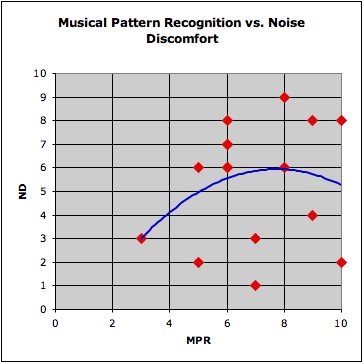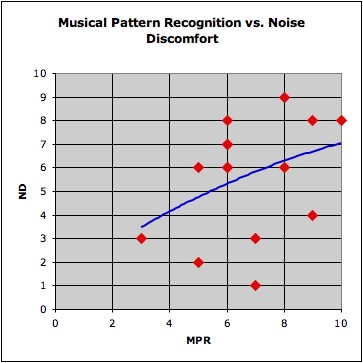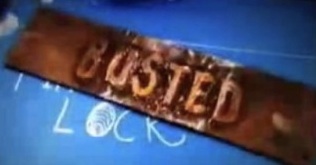Found on Coke machine at Texas State University:

I love it both for the excruciating graphic and for the text, which sounds like a warning more to proctologists and gynecologists than soda-drinkers.

Found on Coke machine at Texas State University:

I love it both for the excruciating graphic and for the text, which sounds like a warning more to proctologists and gynecologists than soda-drinkers.
Two people that I have found myself looking up to lately:
Thanks for the inspiration, folks.
Our department has an annual white elephant gift exchange. If you’ve never participated in one, they go something like this:
This year, there were two gifts that came up that I was interested in: a couple of bottles of beer and a beanie. I managed to have both pass through my hands about a half dozen times before I decided to end the madness: I took a horrible silver plastic battery powered cuckoo clock from another player and finished the rest of the game unmolested.
After the exchange concluded, I left the clock in its packaging for a couple of weeks on my desk, while I pondered what I could possibly do with this travesty of a timepiece. After much thought and consideration, I decided that the appropriate answer was this: cause some mischief.
So, on the night of December 27, when my compatriot Jeff Snider and I were already in the office late at night for a system update, we decided to strip all the faux-bavarian plastic off of the clock, remove the hands, and hide it in our boss’ suspended ceiling, where it would peal forth hourly with its sickly electronic mewling. We taped up the speaker to make it a bit quieter (and therefore more difficult to find), lifted a ceiling tile, tossed it on top of one of the light fixtures, and beat a hasty retreat.
When everyone came back from the holiday, we were surprised to hear nothing about it for a couple of weeks. It occurred to us that we hadn’t actually stuck around long enough after putting the batteries in for the first time to verify that it was working correctly, and wondered if our prank had been stillborn. Word came to us through the grapevine a few days later, however, that it was indeed causing some havoc. Reports escalated for a few days after that until the situation finally came to a head in a fairly entertaining fashion. The story, as I’ve reconstructed it from various people’s accounts, is this:
After a couple weeks, Mike had had enough of the dreadful electronic caterwauling, and came storming out of the office, asking “what is that horrible noise? Has one of you got that as your wretched cell phone ringer?” Kay, the administrative assistant, explained that she (rightly) thought it was coming from his office, and assumed it was some kind of gadget or alarm that he had set up.
They then noticed that it was going off regularly at 13 minutes after the hour, and knowing now to expect it, grew increasingly agitated with the situation over the next few days. Finally, one afternoon, Ron (of Ron-A-Thon 2007 fame) had enough of their frustration, and pulled a ladder into the work area and started rooting through the ceiling at the appropriate time. He quickly located the loose bundle of batteries, a timepiece, and wires, and reached the conclusion that any right-thinking person would:
He thought it was a bomb.
They called Joan, the head of the library in which we all work, and Todd, one of her staff, to have a look at it. Todd fortunately quickly reassured everyone that it looked harmless, and was most likely just a prank, thereby narrowly averting an evacuation of the building and a visit from the local constabulary. (And, incidentally, allowing this story to actually be told.)
Kay kept the gadget on her desk for a few days while Mike began asking pointed questions in staff meetings: “Do any of you know anything about a little electronic chime that was in my ceiling? We think it may have been pulled out of one of those musical greeting cards as a prank.” We all had a good laugh about it in the meeting, feigning ignorance until Mike had the perspicacity to start asking people individually “Did you have anything to do with this?” Jeff, unable to tell a lie, hedged until Mike was sure he was involved. From there the whole sordid tale came out.
Fortunately, all the involved parties had a good sense of humor about it, though Mike has promised revenge most foul will come our way when we least expect it. I say: Let the games begin!
The head of our department organized a Halloween Hamburger social for this afternoon. One of my friends, Kevin Huffaker — artist, mischief maker, and all around really nice guy — decided that this should be the year of the first annual Ron-A-Thon. The idea behind the Ron-A-Thon is to get as many people as possible to dress like Ron Akin, a venerable and much-loved figure within our department. Ron is tall, affable, and sports a long white ponytail and a self-imposed uniform of a long-sleeve white button-down shirt, dark blue jeans and open-toed sandals, and is thus ripe for imitation.
The Ron-A-Thon was a glorious success, with about a dozen people taking part, most with extravagant wigs, and all with the requisite combination of clothing. The trophy that Kevin had crafted — essentially a Ron action figure — was deemed too wonderful to award to a single individual, so Ron decreed that it should go to a public place for the enjoyment of all.
Photos from the event are here. Enjoy!
First off, a great big “Thank You!” to the 16 people who chipped in with data for the little experiment I proposed in Chaos and Form, Noise and Music: A Mini-Research Project! It was great fun to see all of your experiences and discussion rolling in, and to root for the data to go one way or the other. I really appreciate your participation!
Here is a graph of all the data I eventually received:

Based on this plot, I’m guessing that my theory doesn’t hold water. If it were true that a low tolerance for noise were the result of the pattern recognizing parts of your brain going into an overactive frenzy, I would have expected to see the trend to start low in the bottom left corner of the graph and to steadily rise toward the right side of the graph — obviously not what actually happens in reality.
But wait! This may just be a product of the small sample set. Look what happens if I remove a single outlying data point (Barry Brake, I’m looking at you):

Suddenly, the curve becomes almost exactly what I would have predicted. So, I’m left with two possibilities:
Any of you statisticians out there care to weigh in? My theory may have life in it yet, but until I get more data, I guess I’ll have to consider this theory:

The inimitable Jason Young and I took this past Sunday to build a hardware store hovercraft out of wood, plastic sheeting, a leaf blower, and peanut butter. (Note: one of those things is a lie.) We then set my children (read: “lab rats”) floating down the street on it like passengers on a giant air hockey puck. We had a super time constructing and running the thing, and highly recommend it as a weekend project for anyone inclined toward similar sorts of potentially dangerous madness.
Please enjoy the video, won’t you? Thank you. [Note for Facebook friends: the video quality on Facebook is much better than that on Google Video.]
My friend Joshua Kriegshauser, with whom I worked at Electronic Arts, has posted a magnificent video of his assembly of the 5,200-piece Millennium Falcon lego kit over the span of 11 days. Be sure to watch for the outfit changes!
Tremendous work, Josh!
NOTE: This is an audience participation post. See the bottom for how you can help!
The other afternoon, I was listening to WNYC’s Radio Lab, a show from a New York public radio station. Radio Lab always has really interesting shows, where they take a topic and run with it wherever the curiosity of the inquisitive hosts leads. The topic du jour was Musical Intelligence, and the major chapters of the program included tonal language as it relates to perfect pitch, our tendency to use baby talk as a surrogate and supplement for touch, and a music composition program that uses human composers’ scores as input.
(Interesting fact: people who grow up speaking tonal languages, such at Mandarin or Vietnamese where the pitch at which one speaks a work alters its meaning, have a 75% incidence of perfect pitch, whereas the rest of the world has 10% or less.)
One of the topics the show discussed was how the brain deals with unfamiliar sounds. Since our gray matter likes nothing better than recognizing and ordering patterns, there’s a dedicated group of neurons that spring into action whenever a new sound intrudes upon your ears. These neurons try to process and catalog the incoming noises. If they fail, they dump out some dopamine, a neurotransmitter that can affect one’s mood.
Now, I have a rather curious quirk: I hate being in noisy places. Being in a restaurant with lots of people and hard surfaces becomes almost physically uncomfortable for me after a mere 5 minutes or so. But playing in or listening to a loud band doesn’t bother me in the same way — my problem seems to be mostly with unstructured sound.
When I heard about this pattern-recognition center in the brain, it occurred to me that perhaps the reason for my aversion to noise is that my brain is unusually aggressive in its attempts to recognize patterns, and when it can’t do so, gets fatigued quickly. This theory would seem to be supported by the fact that I have good relative pitch, and can transcribe a melody I’ve heard more easily than most people. (This, by the way, is my sole gift as a musician, and is the reason I tend to like learning new instruments more than mastering old ones.)
So, to help me corroborate my theory, I need your help! I’d like to find out how people’s skill at recognizing musical patterns correlates to their level of discomfort with noise. If you could help by rating yourself on a scale of 1 to 10 in each of those areas, I’ll compile the results and see if there’s any statistically significant correlation between the two numbers.
To help out, here’s what the scales will be:
So, for my own assessment, I’d give myself an MPR of 8 and a ND of 8 as well.
So, if you’re willing to help, leave a comment with your rating of yourself in these areas! I’d love to have ratings both from other people who are musical and who aren’t so that I can have data on both sides of the equation. Thanks in advance for your contributions, gentle readers!
UPDATE: Early results are coming in. There’s a definite clustering at one corner of the graph. Come on, non-musical and/or noise-loving people, we need to hear from you!
UPDATE 2: More data, and a trend line on the graph now. There is a bit of a trend emerging, though Barry skewed the far end, which may put the lie to my theory. We need some non-musical people to help fill in the gaps for us!
UPDATE 3: You guys rock. Thanks for all the good data. I’ve plotted the additional information, and the correlation I expected look less and less strong. It is interesting that there seems to be an inverse bell distribution on the noise tolerance taken by itself — people seem inclined to be either bothered not much or a fair bit by it. I’ll keep gathering data for a week to gather any stragglers and then post final results.